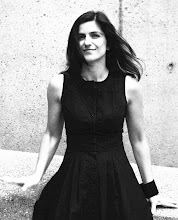singing buildings
"Valéry brings Socrates and Phaedrus together out of Hades to discuss an imaginary recollection of architectural form—arguably a vision of a modern aesthetics halting the mobilized world through timeless beauty. Eupalinos is the name of this Platonic dialogue, after the ancient Greek architect who, according to Phaedrus, had the great ability to put things in order. Under his direction, formless stacks of stones were organized into the most beautiful architecture. By connecting the regular and the irregular, Eupalinos could create clear and organized forms and immersive space. Inside this quasi-total work, humans could move around and feel their presence in the world, either in silence or with a pleasant murmur Inside Eupalinos’s buildings, people could even find sublimation without effort. As he told Phaedrus in conversation, Eupalinos believed that, in realizing architecture, he built himself.
Phaedrus reports that this great architect—actually a Greek engineer who built a huge tunnel in the sixth century BC—differentiated between buildings that were mute, those that talked, and those that could sing. The mute can only be despised for their arbitrary, if sometimes pleasant forms. Those buildings content to talk Eupalinos identifies with prisons, which allow their prisoners to sigh, with department stores that provide inviting halls, readily accessible stairs, and bright, roomy spaces for businessmen, and with courthouses, whose huge masses of stone, plain walls, and few entrances can accommodate the verdicts and punishments of justice in all its majesty and rigor. Finally, Eupalinos unfolds to Phaedrus the magnificent image of the huge—singing—buildings that could be admired at the harbors.Their pure white wings reached out into the sea to protect the basins. Such a project, Eupalinos explains, meant to dare Neptune himself. Mountains had to be dismantled and poured into the waters that were to be enclosed; boulders had to be laid against the moving depth of the sea. Thus, the buildings created broad and still harbors of spiritual clarity that even gained in force through the contingent nature surrounding them. They were beautifully necessary and pure like musical tones. According to Eupalinos, singing buildings were harmonious in that they included the human body in their own system. They reflected human organic balance in its perfect proportions, and thereby became an instrument of life. As these balanced buildings discovered their position between body and mind, they exhibited their true relations."
Text excerpt by Mona Mahall, "Globalism in its Mobilized Form,"e-flux [LINK]



0 Comments:
Post a Comment
<< Home